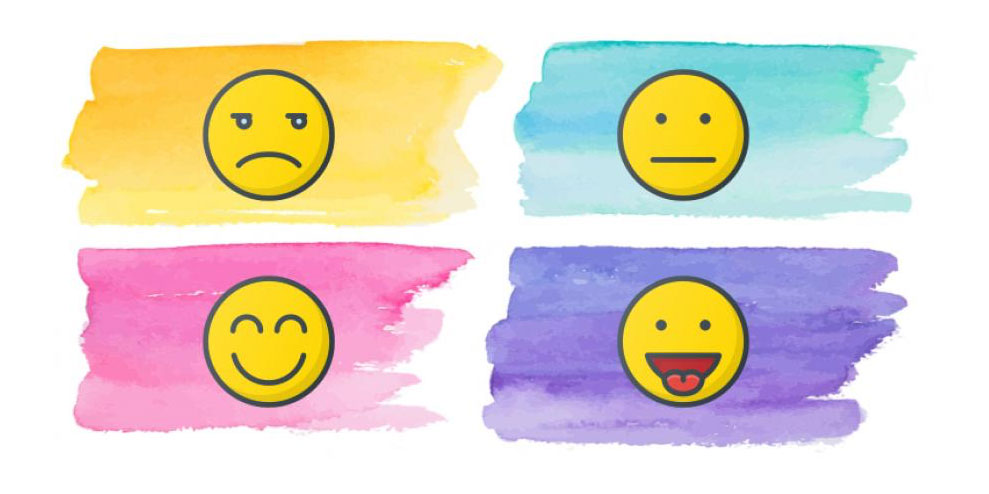How you make customers feel often influences them far more than you might realize.
People make product and brand decisions based on their emotions. They are drawn to brands that pique their interest, inspire trust, and make them feel cared for. Moreover, brands that connect with them on an emotional level are perceived to be more different and valuable. In my book “What Great Brands Do,” I explain that brands are more successful when they seduce customers with an emotional appeal than when they push product features or tout technical specs.
According to research published by the Harvard Business Review, emotionally connected customers are, on average, over 50% more valuable than those who are highly satisfied. They buy more, are less price-sensitive and are more brand loyal.
Feelings even affect business-to-business customers. B2B buyers often rely on their gut feelings when assembling a list of vendors for an request for proposal, and they will sometimes look for objective criteria to rationalize their emotional decisions. They want to feel respected, trusted and valued by their colleagues and managers, so emotions factor into their decisions and negotiations.
Making an emotional connection is critical to building brand equity. Learn how to use emotion to appeal to your customers in this new video.
To learn more from Yohn or to book her to speak to your organization, see her website and YouTube channel.
If you enjoyed this article, sign up for SmartBrief’s free daily leadership email and ANA Brand Activation SmartBrief, among SmartBrief’s more than 200 industry-focused newsletters.
Transcript
Hello. I’m Denise Lee Yohn and today we’re going to talk about feelings — that’s right, the role of emotion in brand-building.
You see, emotion influences people because humans are emotional beings and we make brand and product decisions based on how they make us feel and the identities they enable us to express and experience. When you buy a new smartphone, you’re not just getting a new device — you’re getting all the things it enables you to do, so you feel equipped and empowered — and depending on the specific phone you buy, you’re probably also getting a sleek design and cool features, so you might feel sleek and cool yourself.
Other brands and products might inspire feelings of trust, confidence, a sense of belonging or simply interest or curiosity. These are all emotions that create appeal and can lead to a powerful bond with customers.
Emotions work not only for consumers, but also business to business customers. Research reported on in the Harvard Business Review examined corporate decision makers. It found that customers’ willingness to be loyal promoters of a vendor depended on product quality, vendor expertise and responsiveness, of course, but the fourth most powerful driver of loyalty was hope. And in Forrester’s Customer Experience Index, emotion was the strongest driver of customer loyalty in 20 of the 21 industries surveyed, including internet service providers and shipping companies.
Making an emotional connection pays off. The researchers at Motista found that emotionally engaged customers are 52% more valuable than those who are merely satisfied. The amount of money they spend with their preferred retailers is up to two or more times higher, they have 306% higher lifetime value, they stay with a brand for an average of 5.1 years versus 3.4, and they recommend brands at a rate of over 30% compared to less than 8% for other customers.
What can you do to make a more emotional appeal? First, conduct research to develop a deep and rich understanding of your core customers. Don’t assume you know what they want and need. Sentiment analysis, ethnographic research and other anthropologically based methods are best, but if those are out of reach, you can learn a lot from simply by talking with your customers or asking for input from your frontline employees, since they interact with your customers the most and probably know them the best.
Second, create communications and experiences that tie into how you want people to feel, not only what you want them to know. Whether it’s the design of your physical environment, an email promoting a special offer or a salesperson’s talking points about a new feature you’re introducing, always ask yourself, “what is the customer value?” or “how does the customer benefit?”
Finally, you probably know the importance of storytelling, but I encourage you to also think about story-doing. I mean, create experiences for customers that are engaging and interactive and include them on a journey — that’s the surest way to stand out, be memorable and prompt people to share about you with their friends and colleagues.
Business is based on numbers and thrives on results, but that doesn’t mean that feelings aren’t important. In fact, emotion drives margins and loyalty.
–
This article first appeared in www.smartbrief.com
Seeking to build and grow your brand using the force of consumer insight, strategic foresight, creative disruption and technology prowess? Talk to us at +9714 3867728 or mail: info@groupisd.com or visit www.groupisd.com




